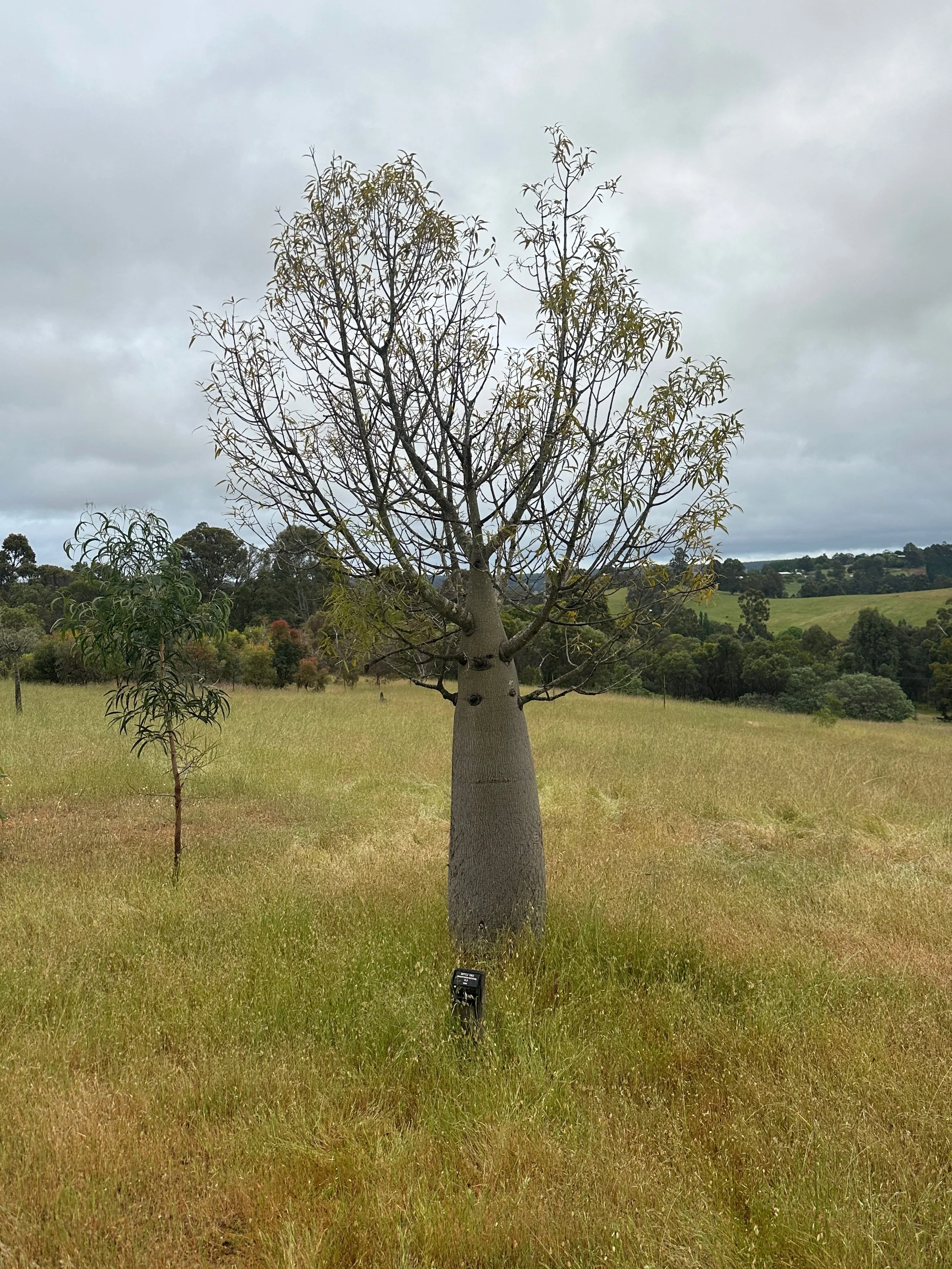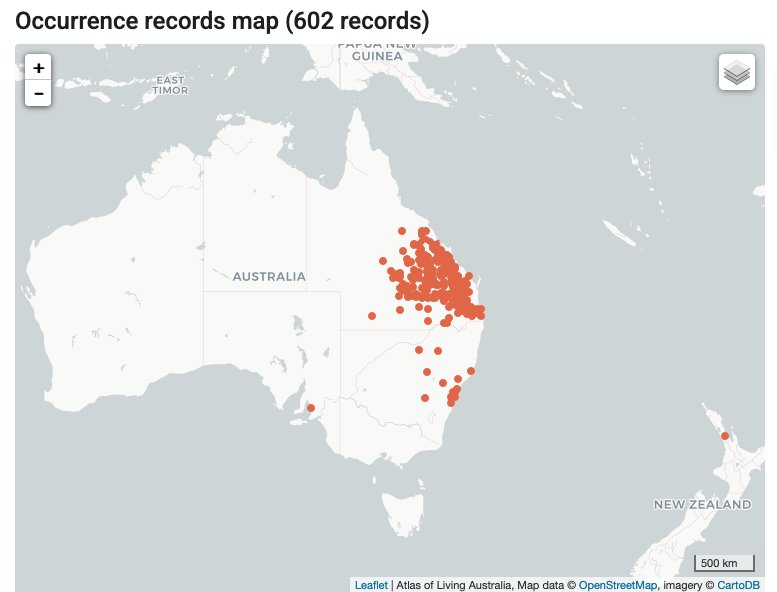Brachychiton rupestris (bottle tree)
Brachychiton rupestris is commonly referred to as the Queensland Bottle Tree, Queensland-Flaschenbaum, the Narrowleaf Bottle Tree or Kurrajong.
The name “bottle tree” refers to the characteristic shape of trunk of mature trees, shaped like a bottle. The diameter at it broadest can reach a 3.5 m. It takes between 5-8 years to develop the bottle shape.
The height of the tree reaches a maximum height of between 18-25 m, and the canopy spans between 5-12 m in diameter.
The tree is deciduous dropping its leaves before the flowering period, which is typically between the October and December. The flowers are creamy-yellow coloured with red markings.
It is found naturally from Central Queensland through to northern New South Wales – see map opposite.
The bottle part of the tree contains a significant amount of water between the inner bark and the trunk. Aboriginal people carved holes into the soft bark to create structures that expose the water. The seeds, roots, stems, and bark have been a source of food for Aboriginal people as well. The fibrous inner bark was used to make rope and to make fishing nets.
The trees in this Park were planted in 2003.
Information sources
Atlas of Living Australia - https://bie.ala.org.au/species/https://id.biodiversity.org.au/node/apni/2905662
The Australian National Botanic Gardens and the Centre for Australian National Biodiversity Research (CANBR)
https://www.anbg.gov.au/gnp/interns-2005/brachychiton-rupestris.html

